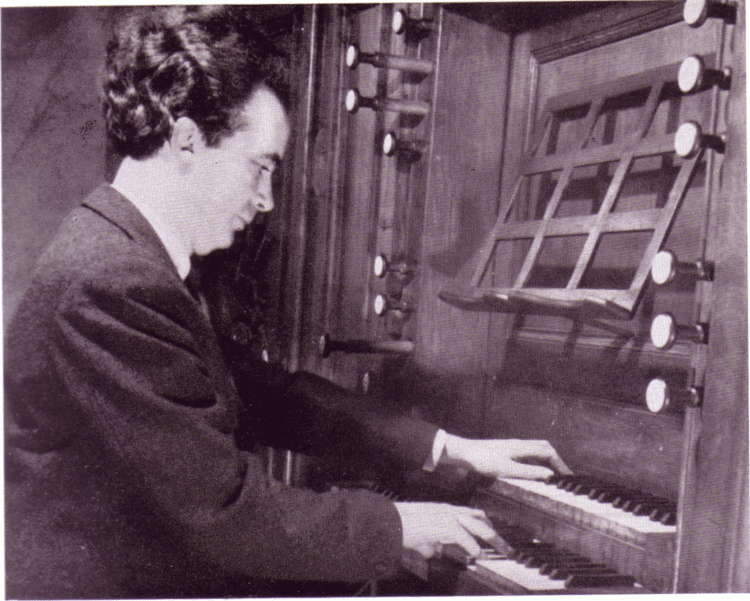Genre Classical | Record label BNF Collection | |
 | ||
Died 28 October 1962, Liège, Belgium Albums Chapelles princières. La chapelle de François Ier (Mono Version) Similar André Souris, Henri Pousseur, Albert Dupuis, René Defossez, Marcel Quinet | ||
Pierre froidebise m ditation for organ
Pierre Froidebise (15 May 1914 – 28 October 1962) was a Belgian organist, composer, and musicologist.
Contents
- Pierre froidebise m ditation for organ
- Life
- Compositional style
- Dramatic
- Orchestral
- Vocal
- Chamber music
- Keyboard
- Songs
- References
Life
Froidebise was born in the rural Condroz village of Ohey, province of Namur, the son of a well-off retail pharmacist. After completing his secondary education, he began studying the organ, first at the Namur Conservatory with René Barbier and then with Paul de Maleingreau at the Brussels Conservatory, where he also studied composition with Raymond Moulaert and fugue with Léon Jongen. He took the first prize for organ in 1939, and in 1941 won the Agniez Prize for composition (Froidebise 2004; Vanhulst 2001).
He subsequently studied composition with Paul Gilson and Jean Absil, before moving to Paris to further his organ studies with Charles Tournemire (Vanhulst 2001). In 1942 he became organist at the church of Saint-Jacques in Liège, where later he performed and was choirmaster at the Grand Séminaire and taught harmony at the Conservatory, where he was appointed professor in 1947 (Froidebise 2004).
In the meantime, he won the Belgian second Prix de Rome in 1943 for his cantata La navigation d’Ulysse (Vanhulst 2001).
As a teacher, his notable students include Célestin Deliège and Henri Pousseur. Froidebise died in Liège on 28 October 1962 (Froidebise 2004).
Compositional style
Froidebise's earliest organ compositions show the influence of César Franck, but his enthusiasm soon turned to Igor Stravinsky for his model. His Trois poèmes japonais for voice and orchestra, Op. 1, No. 1 (1942), while exhibiting traits of his teacher Absil, in its overall feeling recalls Stravinsky's Three Japanese Lyrics, and the Russian master's presence is even clearer in the Cinq comptines for voice and eleven instruments, Op. 1, No. 2 (1947), which was performed at the 1950 ISCM Festival (Vanhulst 2001). His discovery of the music of Anton Webern led to a decisive turn to serialism beginning in 1948, with the cantata Amercœur—a rather severe work setting Liège place names in an economical twelve-tone technique (Vanhulst 2001).
From this point onward, Froidebise was a confirmed dodecaphonist and maintained regular contact with Olivier Messiaen, René Leibowitz, and Pierre Boulez in Paris (Froidebise 2004). His finest work, Stèle pour Sei Shonagon (1958), for soprano and four instrumental groups, added aleatory elements to a warmer use of twelve-tone technique than that found in Amercœur, combined with a supple rhythmic treatment (Vanhulst 2001).
Dramatic
Orchestral
Vocal
Chamber music
Keyboard
Songs
Livre d'orgue - Suite du premier ton: Fugue Lentement
Das Orgel-Büchlein: No 1 - Nun komm - der heiden Heiland - BWV 599
Magnificat octavi toni: Suscepit
